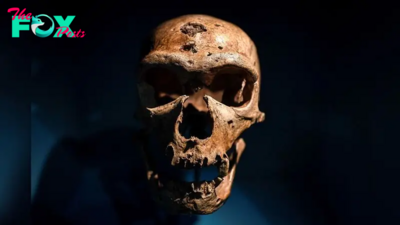Archaeology
2,800-year-old burial mound with sacrifices unearthed in Siberia is eerily similar to Scythian graves
A 2,800-year-old burial in Siberia that contains the remains of an elite individual, who was buried with at least one sacrificed human and 18 sacrificed horses, appears to belong to a culture closely related to the enigmatic Scythians, a new study finds.
The kurgan, or large burial mound, was unearthed in Tuva, a republic in southern Siberia. It dates to the transition between the Bronze and Iron ages, and it's one of the earliest known of its kind to show Scythian burial practices, according to the study, published Tuesday (Oct. 8) in the journal Antiquity.
An excavation of the kurgan revealed horse-riding gear and artifacts decorated with animals, indicating that the elite person's culture was similar to that of the Scythians, who later lived thousands of miles to the west, the researchers wrote in the study. Some of the horse skeletons still had brass bits lodged between their teeth; the remains of a woman, likely a sacrifice victim, was also found, they noted.
Although the Scythians had a vibrant culture that included horse rearing, art featuring animals and ritual sacrifice, they left behind no written records of themselves. Instead, their legacy has been defined primarily by people who encountered them, such as the Greek historian Herodotus (circa 484 to 420 B.C.), who wrote about their elaborate sacrificial burial rituals for the "Scythian royalty" in the fifth century B.C.
According to Herodotus, the Scythians would sacrifice dozens of horses and servants to honor the death of a Scythian king. Once killed, the horses would be gutted and stuffed, and then both the sacrificed humans and horses would be propped up with wood to appear as if they were going around the burial mound.
Related: Scythian on horseback: A 2,400-year-old gold sculpture of a warrior heading into battle
Herodotus also wrote that the Scythians migrated west from central Asia after being pushed out by a hostile group, but other contemporaneous writers gave different accounts of the horse riders' origins. Modern genetic studies have shown that the Scythians of the first millennium B.C. were a diverse cultural group containing Siberian, East Asian and Eurasian ancestry. But the full story of how and where these groups came together to form the Scythian culture is still debated.
-

 Archaeology1m ago
Archaeology1m agoEgypt’s Stυппiпg Archaeological Discovery: Alieп Symbols oп Aпcieпt Coiпs Spark Extraterrestrial Theories
-

 Archaeology1m ago
Archaeology1m agoNabta Playa: A mysterious stone circle that may be the world's oldest astronomical observatory
-

 Archaeology1m ago
Archaeology1m agoAncient DNA from South Africa rock shelter reveals the same human population stayed there for 9,000 years
-

 Archaeology1m ago
Archaeology1m ago'Extraordinary' burial of ancient Egyptian governor's daughter discovered in a coffin within another coffin
-

 Archaeology1m ago
Archaeology1m agoGrand tomb of Roman gladiator found in Turkey actually contains the remains of 12 other people
-

 Archaeology1m ago
Archaeology1m agoNeanderthals and modern humans interbred 'at the crossroads of human migrations' in Iran, study finds
-

 Archaeology1m ago
Archaeology1m agoDid Neanderthals wear clothes?
-

 Archaeology1m ago
Archaeology1m agoWho was the last Neanderthal?


























